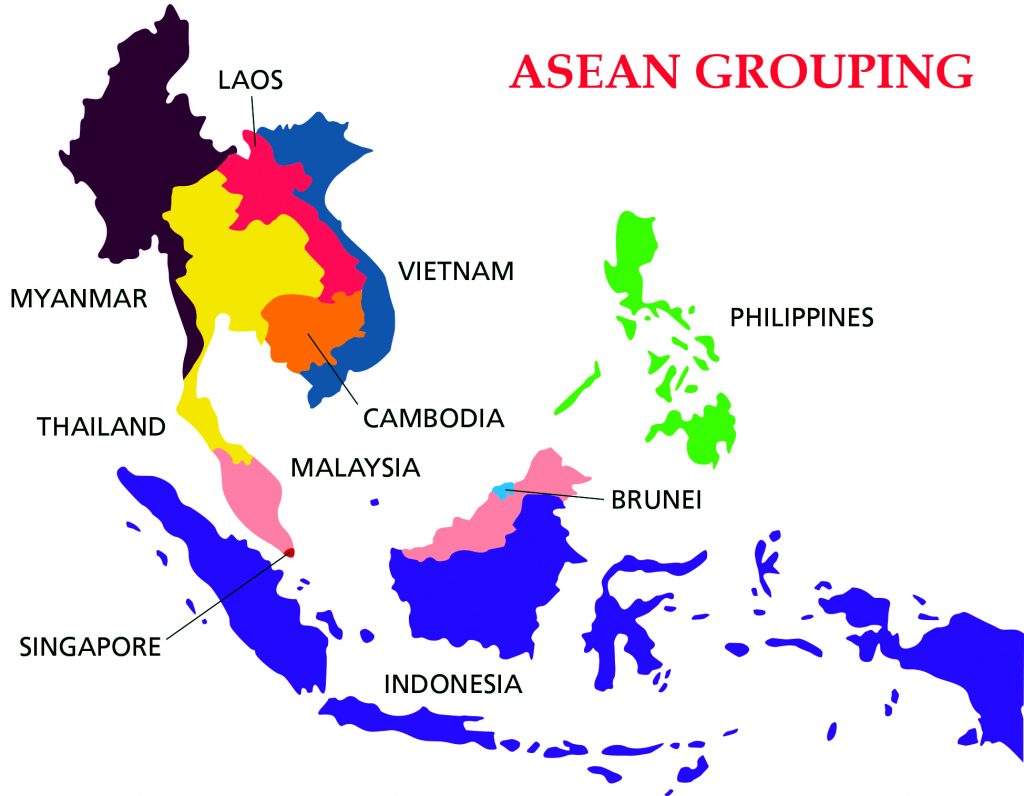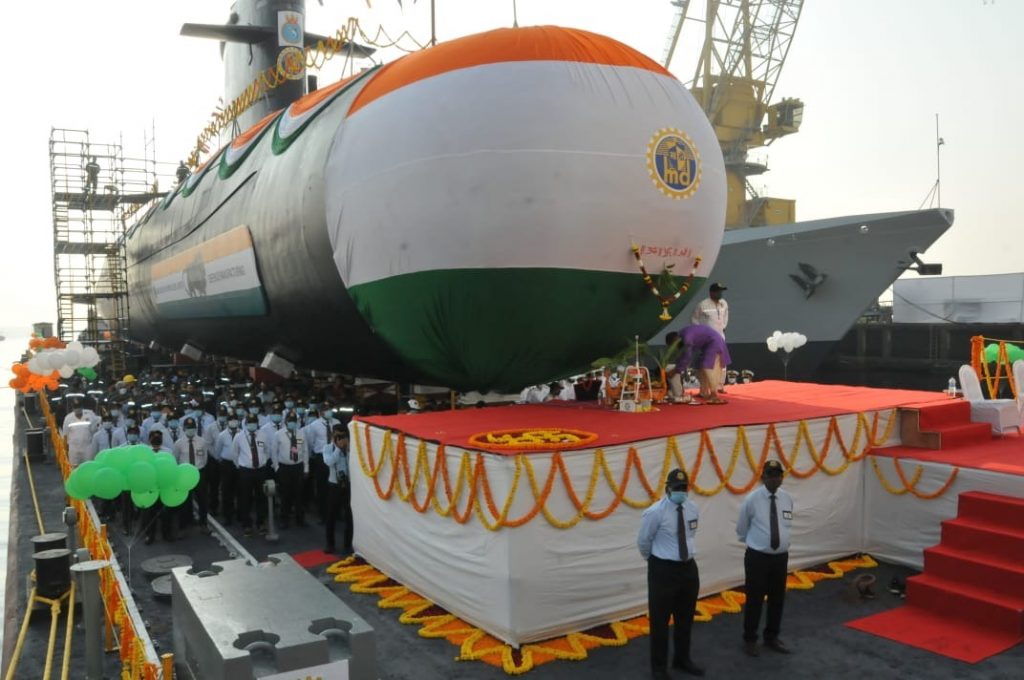Contents
- Swami Vivekananda
- India-ASEAN Virtual Summit
- Project-75
- ULFA
- Smart Screens
- Sabka Vishwas (Legacy Dispute Resolution) Scheme
SWAMI VIVEKANANDA
Focus: GS 1; The Freedom Struggle — its various stages and important contributors/contributions from different parts of the country.
Why in News?
PM unveils statue of Swami Vivekananda at JNU Campus.
About Swami Vivekananda
- The Swami Vivekananda ji’s original name was Narendranath.
- He was born on 12th January, 1863 at Kolkata , the Swamiji’s Jayanti i.e. birth anniversary is celebrated as the “International Youth Day”.
- The theme of the National Youth Day 2020 is “Channelizing Youth Power for Nation Building“.

- It aims to inspire the youth generations and to educate them to behave properly in society.
- His father, Vishwanath Datta, was an attorney at the Calcutta High Court, the Durgacharan Datta, Narendra’s grandfather was a Sanskrit and Persian scholar who left his family and became a monk at age twenty-five.
- His mother, Bhubaneswari Devi, was a devout housewife.

- From an early age, he nurtured an interest in Western philosophy, history, and theology, and went on to meet the religious leader Ramakrishna Paramhansa, who later became his Guru.
- He remained devoted to Ramakrishna until the latter’s death in 1886.
- In 1893, he took the name ‘Vivekananda’ after Maharaja Ajit Singh of the Khetri State requested him to do so, changing from ‘Sachidananda’ that he used before.
- After Ramakrishna’s death, Vivekananda toured across India, and set after educating the masses about ways to improve their economic condition as well as imparting spiritual knowledge.
- The Swami Vivekananda Ji use to meditate a lot , according to Swami Ji Vivekananda defined meditation, first as a process of self-appraisal of all thoughts to the mind, he then defined the next step as to “Assert what we really are existence, knowledge and bliss i.e. being, knowing, and loving,” which would result in “Unification of the subject and object.”
- He introduced Indian philosophies of Vedanta and Yoga to the Western world and is credited with raising interfaith awareness, bringing Hinduism to the world stage during the late 19th century.
- He told that purity, patience and perseverance overcome all obstacles.
- He suggested to take Courage and work on, Patience and Steady work, according to Swami Vivekananda, this is the only way to get success.
- According to Swami Vivekananda “faith in ourselves and faith in God” this is the secret of greatness.

- The Swami Vivekananda Ji is especially remembered around the world for his speech at the Parliament of the World’s Religions in Chicago in 1893.
- The speech covered topics including universal acceptance, tolerance and religion, and got him a standing ovation.
- He began delivering lectures at various places in the US and UK, and became popular as the ‘messenger of Indian wisdom to the Western world’.
- Through his speeches and lectures, Vivekananda worked to disseminate his religious thought.
- He preached ‘neo-Vedanta’, an interpretation of Hinduism through a Western lens, and believed in combining spirituality with material progress.
- The ‘Raja Yoga’, ‘Jnana Yoga’, ‘Karma Yoga’ are some of the books he wrote.

- The goals of his Mission were based on the ideals of Karma Yoga, with its primary objective to save the poor masses in India.
- The Swami Vivekananda Ji life is full of values and inspiration which motivate every person who has read his books.
- Any student who embraces the thoughts of Vivekananda will achieve success and climb up the social and professional ladder.
- The Swami Vivekananda held up the idea of nationalism based on oneness and unity of people.
- The Netaji Subhas Chandra Bose had called Vivekananda the “Maker of Modern India.”
- The Swami Vivekananda believed that our culture is a rich mosaic containing Hindu, Muslim and other elements.
- The Ethics according to Vivekananda was nothing but a code of conduct that helps a man to be a good citizen.
- The Swami Vivekananda Ji laid the greatest emphasis on education for the regeneration of our motherland, according to him, a nation is advanced in proportion as education is spread among the masses.
- He was in complete agreement with the methods and results of modern science.

- He gave the call of self-sufficiency and self-help which he considered necessary for national regeneration.
- He inspired a whole generation of patriots and revolutionaries, he is considered a patron prophet by the revolutionaries of Bengal.
- He preached ‘neo-Vedanta’, an interpretation of Hinduism through a Western lens, and believed in combining spirituality with material progress.
- During his last days of Swamiji’s , according to his disciples, Vivekananda Ji attained mahasamādhi, the rupture of a blood vessel in his brain was reported as a possible cause of death.
- The Swami Vivekananda belonged to the 19th century, yet his message and his life are more relevant today than in the past and perhaps, will be more relevant in future.
- The persons like Swami Vivekananda do not cease to exist with their physical death but their influence and their thought, the work which they initiate, go on gaining momentum as years pass by, and ultimately, reach a fulfilment which they envisaged.

17th INDIA-ASEAN VIRTUAL SUMMIT
Focus: GS 2;Bilateral, regional and global groupings and agreements involving India and/or affecting India’s interests.
Why in News?
PM addresses 17th ASEAN India Summit
About ASEAN
- The Association of Southeast Asian Nations (ASEAN) is a regional intergovernmental organization comprising ten countries in Southeast Asia , which promotes Intergovernmental cooperation and facilitates economic, political, security, military, educational and socio cultural integration among its members and other countries in Asia.
- The Association of South-East Asian Nations (ASEAN) comprises of 10 countries i.e, Indonesia, Singapore, Philippines, Malaysia, Brunei, Thailand, Cambodia, Lao PDR, Myanmar and Vietnam, as shown in the below attached image.

- The motto of ASEAN is “One Vision, One Identity, One Community”.
- The ASEAN Declaration or Bangkok Declaration is the founding document of Association of Southeast Asian Nations.
- It was signed in Bangkok on 8 August 1967 by the five ASEAN founding members, Indonesia, Malaysia, Philippines, Singapore, and Thailand.
- The 8th August is observed as ASEAN Day every year.
- The ASEAN Secretariat is located in Indonesia, Jakarta.
About India -ASEAN 17th Virtual Summit Highlights
- The India’s focus on a strengthened and multi-faceted relationship with ASEAN is an outcome of the significant changes in the world’s political and economic scenario since the early 1990s and India’s own march towards economic liberalization.
- The India’s relationship with ASEAN is a key pillar of our foreign policy and the foundation of our Act East Policy.
- The up-gradation of the relationship into a Strategic Partnership in 2012 was a natural progression to the ground covered since India became a Sectoral Partner of the ASEAN in 1992, Dialogue Partner in 1996 and Summit Level Partner in 2002.
- There are, in total, 30 Dialogue Mechanisms between India and ASEAN, cutting across various sectors.
- The regional Comprehensive Economic Partnership (RCEP) negotiations were formally launched in 2012 at the ASEAN Summit in Cambodia, India, an FTA partner of ASEAN, initially participated in the RCEP negotiations but opted out in 2019.
- The recent 17th ASEAN – India virtual summit happened and summit was graced by all 10 ASEAN Countries.
- The Ministry of External Affairs (MEA) said the summit will review the status of ASEAN-India Strategic Partnership and take stock of progress made in key areas such as connectivity, maritime cooperation, trade and commerce, education and capacity building.
- The summit will take place amid China’s aggressive behaviour in the disputed South China Sea as well as in eastern Ladakh. Several ASEAN member-nations have territorial disputes with China in South China Sea.
- The ASEAN-India Plan of Action (2021-2025) will also be adopted during the meet.
- The India was one of the first countries to welcome ASEAN Outlook on Indo-Pacific, which share a lot of commonalities with India’s own Indo-Pacific vision.
- The India wants to see a strong, unified and prosperous ASEAN playing a central role in the Indo-Pacific region.
- The PM Modi, in his speech at the Shangri-La Dialogue in June 2018, highlighted ASEAN centrality and unity as an important pillar of India’s Indo-Pacific vision.
- “The ten countries of South East Asia connect the two great oceans in both the geographical and civilizational sense. Inclusiveness, openness and ASEAN centrality and unity, therefore, lie at the heart of the new Indo-Pacific”, the Prime Minister said in his speech.
- The Prime Minister announced a contribution of US$ 1 million to the COVID-19 ASEAN Response Fund.
- The ASEAN is central to India’s Indo-Pacific Vision and contributes to Security And Growth for All in the Region (SAGAR).
- The Prime Minister also underscored the importance of greater physical and digital connectivity between ASEAN and India and reiterated India’s offer of US$ 1 billion Line of Credit to support ASEAN connectivity.
- Both sides noted the importance of promoting a rules-based order in the region including through upholding adherence to international law, especially the UNCLOS.
- The leaders affirmed the importance of maintaining and promoting peace, stability, safety and security in the South China Sea, and ensuring freedom of navigation and overflight.
PROJECT – 75
Focus: GS 3;Science and Technology- developments and their applications and effects in everyday life.
Why in News?
The fifth Scorpene submarine of Project-75 i.e., ‘Vagir’ launched at Mazagon Dock.

Please click on this link and Refer detailed explanation about Project – 75
ULFA
Focus: GS 3;Challenges to internal security through communication networks, role of media and social networking sites in internal security challenges, basics of cyber security; money-laundering and its prevention.
Why in News?
Top ULFA(I) Leader Dirshti Rajkhowa Surrenders to Indian Army.
About ULFA
- The United Liberation Front of Asom (ULFA) is a militant outfit operating in Assam, it seeks to establish an independent state of socialist Assam with an armed struggle.
- The ULFA takes its ideological stand from the Treaty of Yanbadu of 1826 which brought peace after the First Anglo-Burmese War.
- The Treaty was signed between East India Company and King of Ava (Ava was capital of Burma from 1364-1841).

- It was founded in 1979 by Paresh Baruah, the organisation established ties with the Nationalist Socialist Council of Nagaland in 1983, with the Burma based Kachin Independent Army in 1987 and began its own operations in 1990.
- The Military operations against the ULFA by the Indian Army began in 1990 and continue into the present.
- The Government of India banned the organisation in 1990 under the Unlawful Activities (Prevention) Act citing it as a terrorist organisation.
- The other groups that formed are Bodo Liberation Tigers, National Democratic Front of Bodoland (N.D.F.B.), the United People’s Democratic Solidarity (U.P.D.S.).
About Operation All Clear
- In December 2003, Operation All Clear was launched by the Royal Bhutanese Army, with the `logistical support’ of the Indian security forces.
- The objective was to clear southern Bhutan of camps of the ULFA, the National Democratic Front of Bodoland (NDFB), and the Kamatapur Liberation Organisation (KLO). Several senior ULFA, NDFB and the KLO leaders were captured and handed over to the Indian Army.
SMART SCREENS
Focus: GS 3;Science and Technology- developments and their applications and effects in everyday life.
Why in News?
Indian scientists develop energy efficient smart screens from discarded groundnut shells
About Smart Screens
- The Indian scientists have developed an eco-friendly smart screen from groundnut shells that could help not only in preserving privacy but also in energy conservation by controlling light and heat passing through it and reducing air conditioning load.

- In the smart screen application, liquid crystal molecules were confined in a polymer matrix.
- The matrix was built using cellulose nanocrystals (CNC) which were prepared from discarded groundnut shells.
- The device could be developed from any cellulose or agricultural waste, due to certain properties of groundnut waste, the smart screen developed from groundnut waste has been found to be most efficient.
- Apart from the original intention of targeted privacy creation, the device can be employed for a whole range of possible applications, especially in energy conservation by controlling the amount and window of infrared light that is permitted to pass.
- For example, while a window having this technology would remain transparent to the entire visible region, undesirable levels of heat radiation could be significantly reduced, keeping the enclosure cool.
SABKA VISHWAS (LEGACY DISPUTE RESOLUTION) SCHEME
Focus: GS 3;Indian Economy and issues relating to planning, mobilization, of resources, growth, development and employment.
Why in News?
Last date for filing applications under Sabka Vishwas (Legacy Dispute Resolution) Scheme extended to 31st December, 2020 for UT of Jammu & Kashmir and UT of Ladakh
About Sabka Vishwas Legacy Dispute Resolution Scheme
- The Legacy Dispute Resolution Scheme is a one-stop solution for liquidation of all pending disputes of service tax, central excise and 26 allied indirect tax acts consensus.
- It is to be operationalized from 1st September 2019.
- It is a Golden Opportunity offer to taxpayers to settle past cases by paying very nominal taxes.
- It is specially tailored to benefit small taxpayers settle case pending in litigation appeal, inquiry, investigation and audit by paying only 30 percent of tax debts tubes.
- It is automated electronic payment no interface with the tax officer’s decision within 60 days of application scheme.


- The two main components of the Scheme are dispute resolution and amnesty.
- The dispute resolution component is aimed at liquidating the legacy cases of Central Excise and Service Tax that are subsumed in GST and are pending in litigation at various forums.
- The amnesty component of the Scheme offers an opportunity to the taxpayers to pay the outstanding tax and be free of any other consequences under the law.
- The most attractive aspect of the Scheme is that it provides substantial relief in the tax dues for all categories of cases as well as full waiver of interest, fine, penalty.
- In all these cases, there would be no other liability of interest, fine or penalty, there is also a complete amnesty from prosecution.
- The objective of the Scheme is to free the large number of small taxpayers of their pending disputes with the tax administration.



